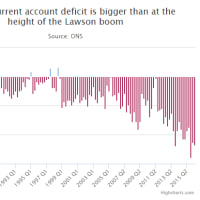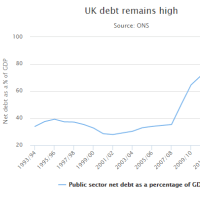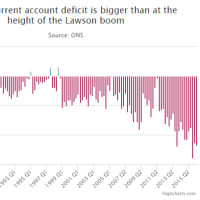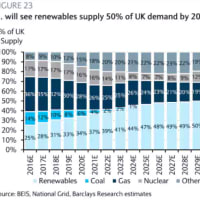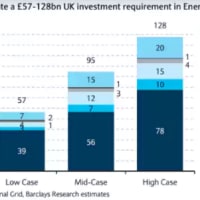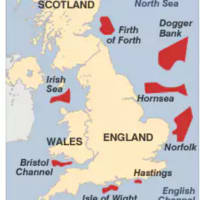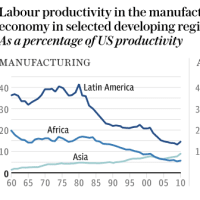Harmless commodity crash accelerates as dollar soars
(米ドル急上昇で無害なコモディティ・クラッシュが加速中)
By Ambrose Evans-Pritchard
Telegraph: 7:49PM GMT 23 Nov 2015


(米ドル急上昇で無害なコモディティ・クラッシュが加速中)
By Ambrose Evans-Pritchard
Telegraph: 7:49PM GMT 23 Nov 2015
'Dr Copper should be struck off the list. He is telling us a lot about over-supply in China, but little about the world economy,' says Capital Economics
「ドクター・コッパーはリストから外されるべき。奴は中国での過剰供給についちゃお喋りだが、世界経済についてはからっきしだ」とキャピタル・エコノミクス。
Copper prices have crashed to their lowest level since the Lehman Brothers crisis and industrial metals have slumped across the board as a flood of supply overwhelms the market.
銅価格がリーマン危機以来最安まで暴落しました。
工業用金属も一律値下がりです。
過剰供給で市場がジャブジャブになったからですね。
The violent sell-off came as the US dollar surged to a 12-year high on expectations of an interest rate rise by the US Federal Reserve next month. The closely-watched dollar index rose to within a whisker of 100, and has itself become a key force pushing down commodities on the derivatives markets.
暴力的なセル・オフが起こったのは、FRBが来月利上げすんじゃないのという期待で、米ドルが12年ぶり最高まで爆上げしたのと同時でした。
注目されている米ドル指数は100寸前まで上昇して、デリバティブ市場でコモディティを押し潰す主要なフォースとなりました。
Copper prices fell below $4,500 a tonne on the London Metal Exchange for the first time since May 2009, hit by rising inventories in China and warnings from brokers in Shanghai. Prices have fallen 32pc this year, and 55pc from their peak in 2011 when China's housing boom was on fire.
中国での在庫増加と上海のブローカーからのワーニングで、銅価格はロンドン金属取引所では2009年5月以来初めて4,500ドル/トンを切るまでに値下がりしました。
今年に入って32%も値下がりしてますね。
中国の住宅ブームがイケイケだった2011年のピーク比だと55%も値下がりしたことになります。
Known to traders as Dr Copper, the metal is tracked as a barometer of health for the world economy but has increasingly become a rogue indicator. China consumes 45pc of the world's supply, distorting the picture. Beijing is deliberately winding down its "old economy" of heavy industry and break-neck construction, switching to a new growth model that is less commodity-intensive.
トレーダーの間ではドクター・コッパーとして知られるこの金属は、世界経済の健康のバロメーターとしてトラッキングされていますが、どんどん当てにならなくなっています。
中国は世界の銅供給量の45%を消費して状況をぐちゃぐちゃにしています。
中国政府はわざと重工業とスピード建築の「オールド・エコノミー」を解体して、コモディティ依存が軽い成長モデルに切り替え中です。
"Dr Copper should be struck off the list," said Julian Jessop, from Capital Economics. "He is telling us a lot about China and the massive over-supply of copper on the market, but he is not telling us anything much about the economy in the US, Europe or the rest of the world."
「ドクター・コッパーはリストから外されるべきなんだよ」とキャピタル・エコノミクスのジュリアン・ジェソップ氏。
「中国だの市場での銅の物凄い過剰供給についてはお喋りだけど、米国、ヨーロッパ、その他の経済についちゃ殆どダンマリじゃん」
The CPB index in the Netherlands shows that global trade began to recover four months ago after contracting earlier in the year, and the JP Morgan global PMI index for manufacturing has risen since then to 51.3 ? well above the boom-bust line.
オランダCPB指数からは、世界のトレードが今年先の縮小の後に4カ月前から回復し始めたことがわかりますし、JPモルガン・製造業グローバルPMI指数なんてあれから51.3まで上昇してますし(好不況ラインをしっかり上回ってます)。
The trigger for the latest plunge in copper prices was a decision last week by the Chilean group Codelco to slash its premium for Chinese customers by 26pc, effectively launchng a price war for global market share. "We're trying to lower costs. We're not cutting production," said the group's chief executive, Nelson Pizarro.
直近の銅価格値下がりの引き金は、チリのコデルコ・グループの先週の、中国の客に対するプレミアムを26%削減する(事実上、世界的なマーケットシェアを巡る価格戦争の火蓋を切った)って決断でした。
「コストを下げようと頑張ってるんだ。生産は減らさないぞ」と同グループのネルソン・ピサーロCEO。
Glencore has already said it will suspend output in Zambia and the Congo for two years until new equipment is installed, and others are doing likewise. But Codelco is the key player.
グレンコアは既に新しい機器が設置されるまでの2年間、ザンビアとコンゴでの生産を停止するって言ってますし、他の国も似たり寄ったりです。
でもコデルコはキー・プレーヤーですよ。
Kevin Norrish, at Barclays Capital, said Codelco is in effect copying Saudi Arabia's tactics in the oil market: using its position as the copper industry's low-cost giant with a 10pc global share to flush out the weakest rivals.
バークレイズ・キャピタルのケヴィン・ノリシュ氏曰く、コデルコは事実上、サウジアラビアの石油市場戦術を真似してるんだそうで。
つまり、最弱ライバルを一掃する為に国際マーケットシェア10%を誇る銅業界の低コスト大手としての立場を利用しているんだとか。
The price war comes as the expected revival of Chinese metal demand disappoints yet again. Warehouse stocks in Shanghai have risen to their highest in five years, though LME inventories have been falling since September.
価格戦争が起こったのは、期待されていた中国の金属需要がまたまた期待外れに終わった時のことでありまして。
LME在庫は9月から減り続けていますが、上海の在庫は5年ぶり最多まで膨れ上がりました。
Views are starkly divided over the outlook for copper, as it is for the whole nexus of commodities. Goldman Sachs says the demise of China's "old economy" will lead to a near permanent glut through to the end of the decade.
銅の展望を巡る見解は、コモディティ全般同様、ばっくり真っ二つです。
ゴールドマン・サックスは、中国の「オールド・エコノミー」の苦境で2020年まで万年余り気味になるんじゃないのって言ってますし。
Natasha Kaneva, from JP Morgan, said it would take another one to two years to touch the bottom of the mining cycle, predicting further price falls of 12pc-28pc. "We remain bearish on all the base metals," she said.
JPモルガンのナターシャ・カネヴァ氏は、鉱業サイクルの底打ちまでにはあと1-2年かかって、価格も後12-28%くらい下がるかもって言ってますね。
「ベースメタル全般についてはベア維持」だそうです。
But the International Copper Study Group is sticking to its guns, insisting that there will be a global copper shortage of 130,000 tonnes next year.
でも国際銅研究グループは頑なでして、来年には銅が13万トンも不足するであろう!と言い張っています。
What is clear is that the commodity rout has taken on a life of its own, with financial flows and speculators reinforcing the crash. Nickel, lead, zinc and aluminium have all plunged over recent weeks, tracking the parallel drama in oil and gas. Even soybeans and wheat have fallen by roughly 40pc since May.
はっきりしてるのは、資金の流れと投機家がクラッシュに燃料を投下して、コモディティ騒動が自立しちゃったことでしょうか。
ニッケル、鉛、亜鉛、アルミニウム、軒並みこの数週間暴落してまして、石油やガスの値下がりの後を追っているが如く。
大豆や小麦まで5月比-40%っていうね。
Commodity crashes are a dangerous warning signal if global demand is falling. But they are benign if caused by excess supply, acting as a shot of stimulus for most of the world, or a "positive supply shock", as it is known.
世界的な需要が落ち込みつつあるなら、コモディティ暴落は危険なワーニングシグナルですよ。
でも、過剰供給が原因なら良性ですね。
世界の大半にとってはアドレナリン注射みたいなもんで。
さもなければ「ポジティブ・サプライ・ショック」とか呼ばれるシロモノ。
Peter Praet, the European Central Bank's chief economist, said the jury is out on this point, warning that a "significant part" of the latest slump appears to come from weak demand and therefore needs watching carefully.
ECBのチーフ・エコノミスト、ピーター・プラート氏は、現時点では未だよくわからんとして、直近のスランプの「重大なパート」は軟調な需要から来てるようだから慎重なるウォッチングが必要だとワーニング。
Yet the current circumstances are nothing like mid-2008 before the Lehman crisis, when most commodities were reaching fresh highs even though the money supply was already buckling in the US, Britain and the eurozone. Some economists argue that it was the oil shock of June and July 2008 that ultimately caused the financial crisis three months later.
でも、今の状況はリーマン危機前の2008年中盤とは全く違うし。
あの時は、マネーサプライが既に米国、英国、ユーロ圏で減退しつつあったのに、殆どのコモディティが史上最高値に到達しようとしてたわけでしょ。
エコノミストの中には、3ヶ月の金融危機発生の決め手になったのは2008年6月、7月の石油ショックだったって言ってる人もいますから。
This time the picture is inverted, with global real M1 money growing at the fastest pace in 30 years, potentially setting off a strong economic recovery.
今回、状況は逆で、世界的にM1は30年来最速の伸びになってて、上手くいけば強い景気回復を引き起こすかもしれないし。
Harvard economist Carmen Reinhart said commodity busts typically run for seven years as it takes time to clear the tidal wave of supply from over-investment during the boom. If the historical pattern holds, we are only half-way through. "This commodity-price roller-coaster ride is probably not over yet," she said.
ハーバード大学のエコノミスト、カルメン・ラインハルト教授曰く、バブル時代の過剰投資によるジャブジャブを一掃するのに時間がかかるから、コモディティ暴落は大体7年間続くんだそうですよ。
歴史的パターン通りなら、道半ばってとこですかね。
「今回のコモディティ価格ローラーコースターは多分未だ終わってないわよ」とのこと。















